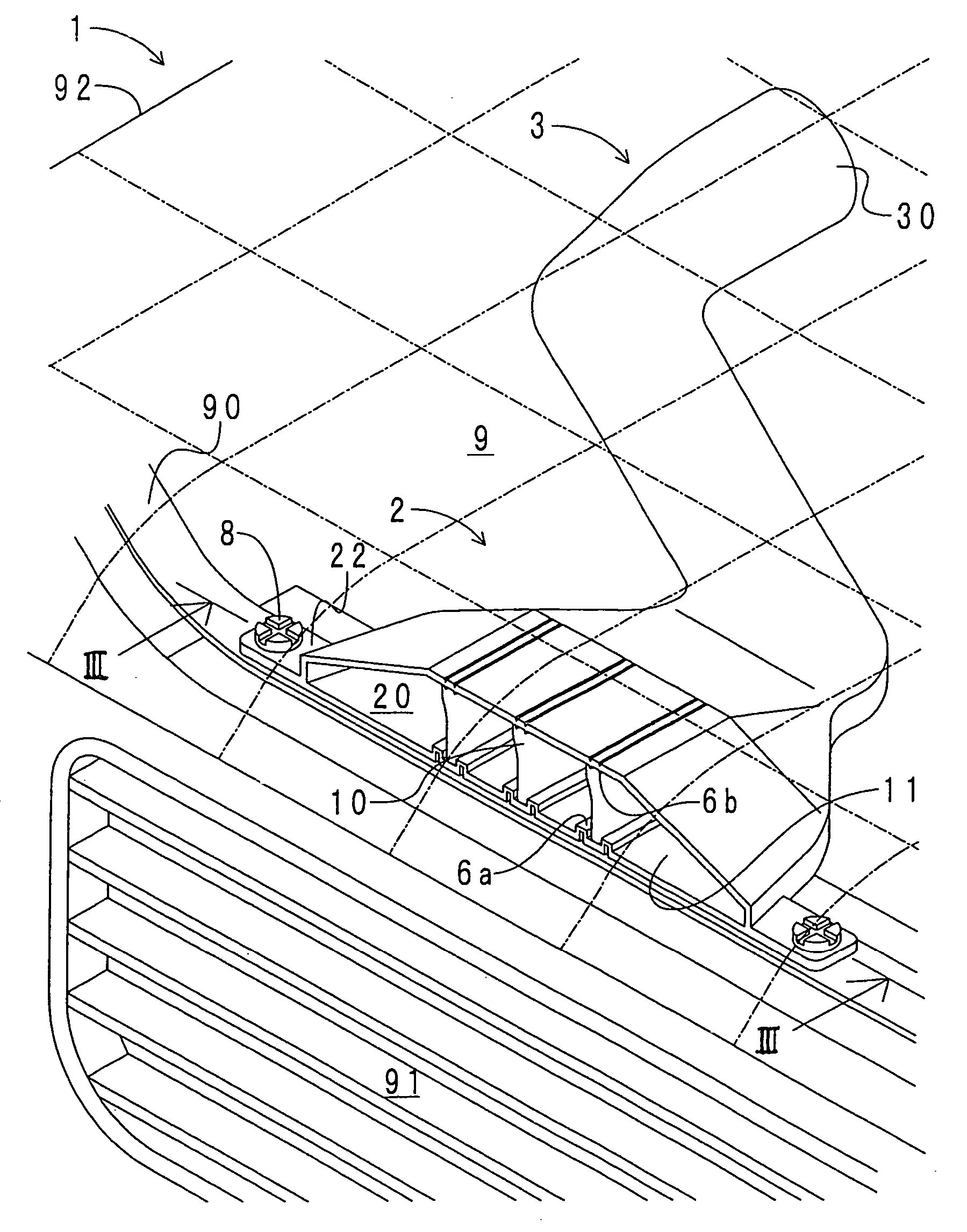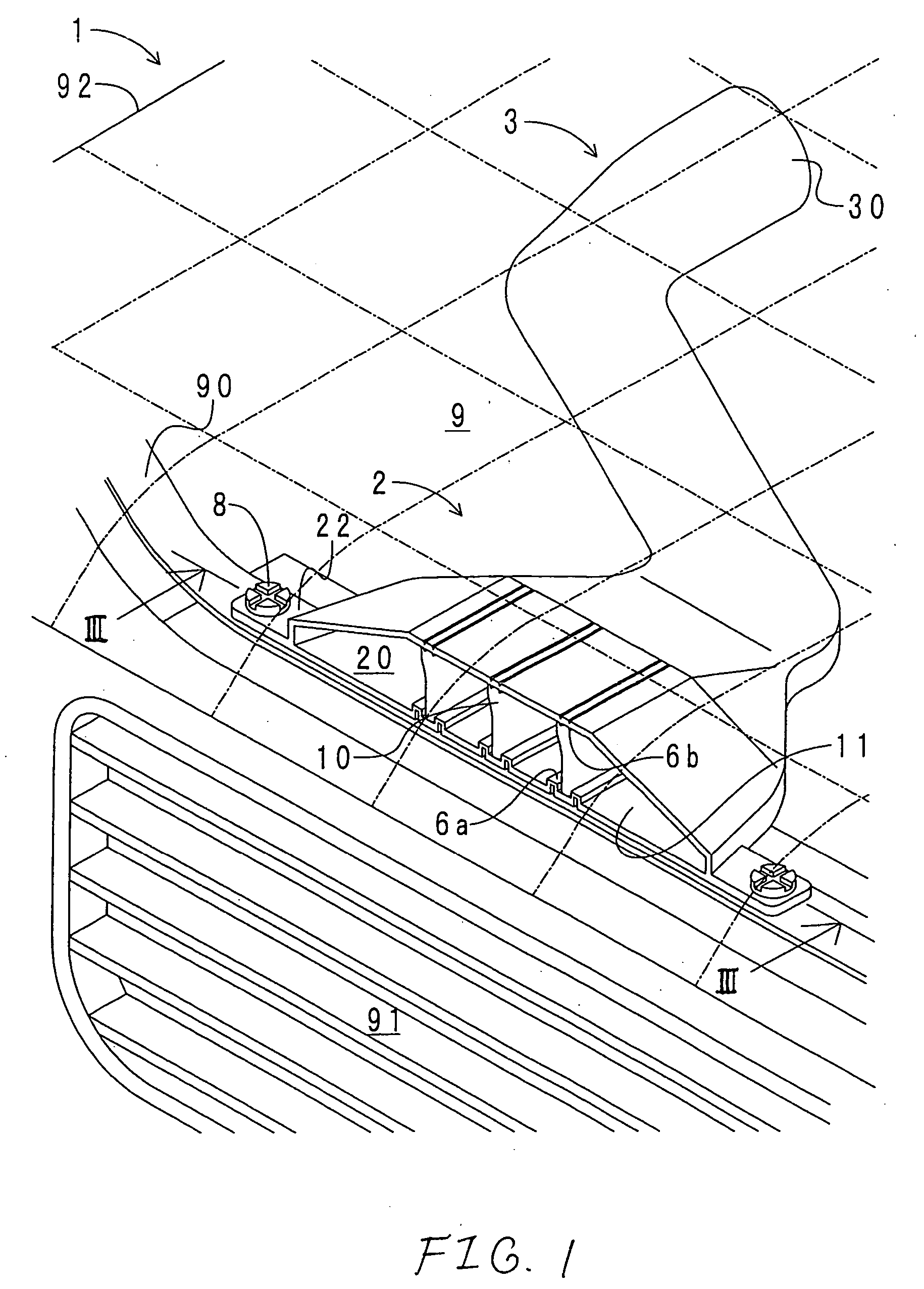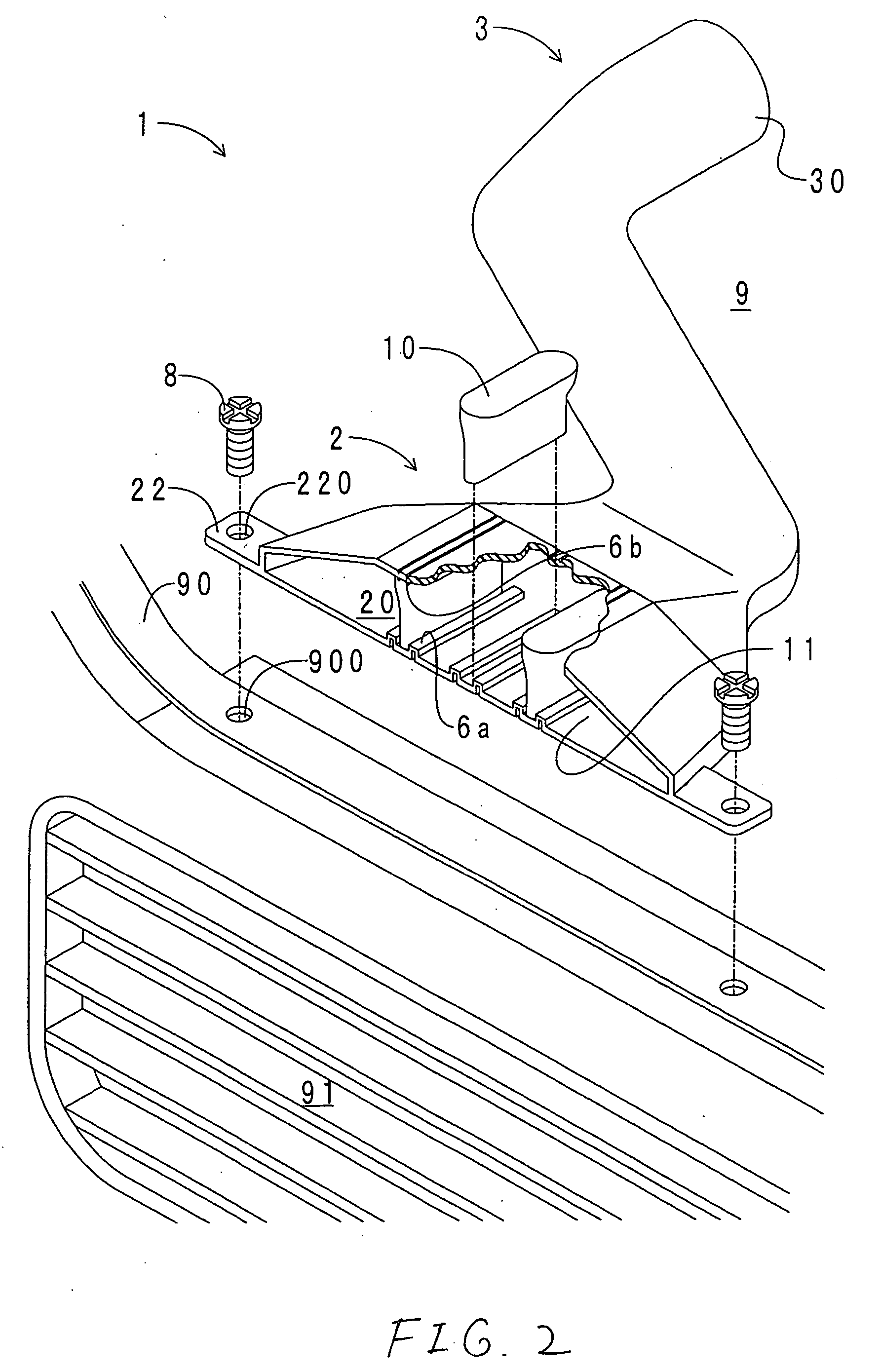Air intake duct
a technology of air intake and duct, which is applied in the direction of combustion-air/fuel-air treatment, machines/engines, transportation and packaging, etc., can solve the problems of consuming part of collision energy, suppress the decline in combustion efficiency in the combustion chamber, and reduce the resistance attributable to the shape of the support member
- Summary
- Abstract
- Description
- Claims
- Application Information
AI Technical Summary
Benefits of technology
Problems solved by technology
Method used
Image
Examples
first embodiment
[0033] First, a description will be given of the construction of an air intake duct in accordance with a first embodiment of the invention. FIG. 1 shows a perspective view of the air intake duct of this embodiment. It should be noted that a hood panel is shown by a wire frame (shown by chain lines in the drawing) due to the convenience of explanation. FIG. 2 shows an exploded perspective view of the air intake duct. FIG. 3A shows a cross-sectional view taken along line III-III in FIG. 1. As shown in these drawings, an air intake duct 1 is comprised of an inlet port section 2, an air passage section 3, a rib member 10, and stopper members 6a and 6b. It should be noted that a wall section of the invention is made up of the inlet port section 2 and the air passage section 3. Air passages 11 are formed in the interiors of the inlet port section 2 and the air passage section 3.
[0034] The inlet port section 2 is formed by injection molding polypropylene (PP). The inlet port section 2 has...
second embodiment
[0045] First, a description will be given of the construction of the air intake duct in accordance with a second embodiment of the invention. FIG. 4 shows a perspective view of the air intake duct of this embodiment. It should be noted that portions corresponding to those of FIG. 1 are denoted by the same reference numerals. FIG. 5 shows an exploded perspective view of the air intake duct. It should be noted that portions corresponding to those of FIG. 2 are denoted by the same reference numerals. FIG. 6 shows a cross-sectional view taken along line VI-VI in FIG. 4. It should be noted that portions corresponding to those of FIGS. 3A to 3C are denoted by the same reference numerals.
[0046] As shown in these drawings, the stopper member 6a is formed in the shape of an annular rib. A circumferentially continuous engaging pawl 62 is formed on an upper end of the stopper member 6a. The stopper member 6a is provided in such a manner as to project from the lower wall of the inlet port sect...
third embodiment
[0048] The air intake duct in accordance with a third embodiment of the invention differs from the second embodiment in that a spring member is disposed instead of the rubber member. Further, the shapes of the stopper members also differ. Furthermore, a cover member is disposed on an outer peripheral side of the spring member. Accordingly, a description will be given only of the differences.
[0049]FIG. 7 shows a cross-sectional view in a short-axis direction of the air intake duct in accordance with this embodiment. It should be noted that portions corresponding to those of FIG. 6 are denoted by the same reference numerals. FIG. 8 shows a perspective view of the stopper member of the air intake duct. It should be noted that portions corresponding to those of FIG. 5 are denoted by the same reference numerals. A spring member 4 is made of steel and has the shape of a hollow truncated cone whose diameter decreases gradually from the lower side toward the upper side, as shown in FIG. 7....
PUM
 Login to View More
Login to View More Abstract
Description
Claims
Application Information
 Login to View More
Login to View More - R&D
- Intellectual Property
- Life Sciences
- Materials
- Tech Scout
- Unparalleled Data Quality
- Higher Quality Content
- 60% Fewer Hallucinations
Browse by: Latest US Patents, China's latest patents, Technical Efficacy Thesaurus, Application Domain, Technology Topic, Popular Technical Reports.
© 2025 PatSnap. All rights reserved.Legal|Privacy policy|Modern Slavery Act Transparency Statement|Sitemap|About US| Contact US: help@patsnap.com



